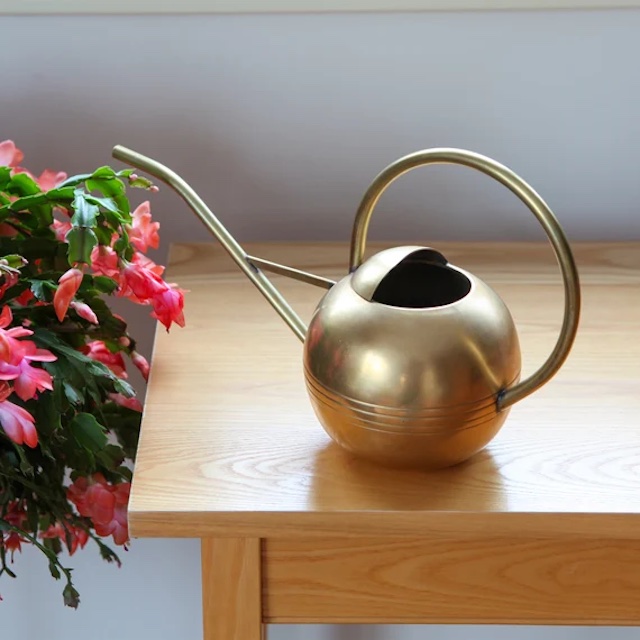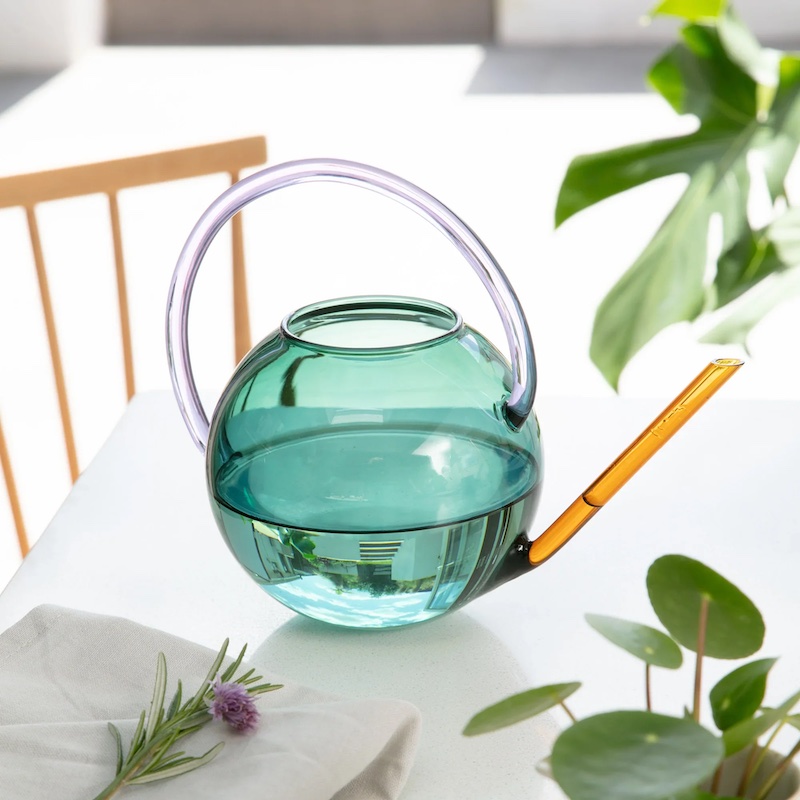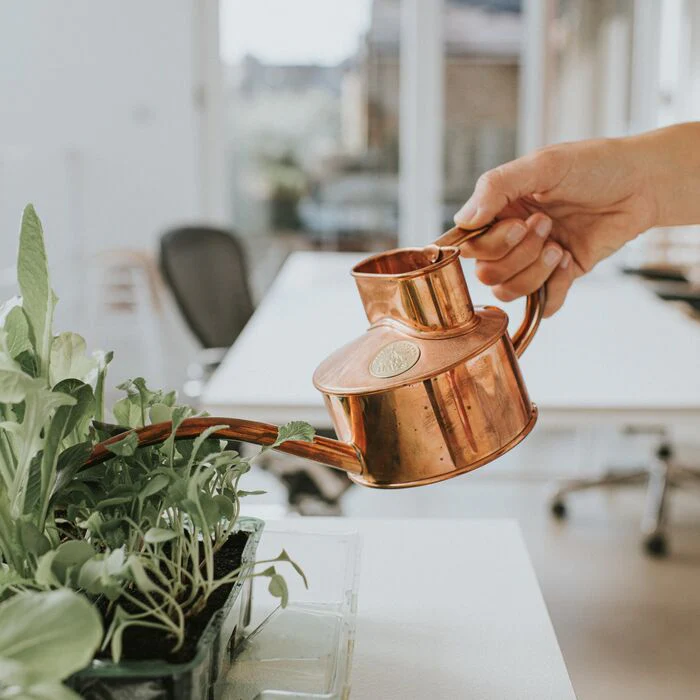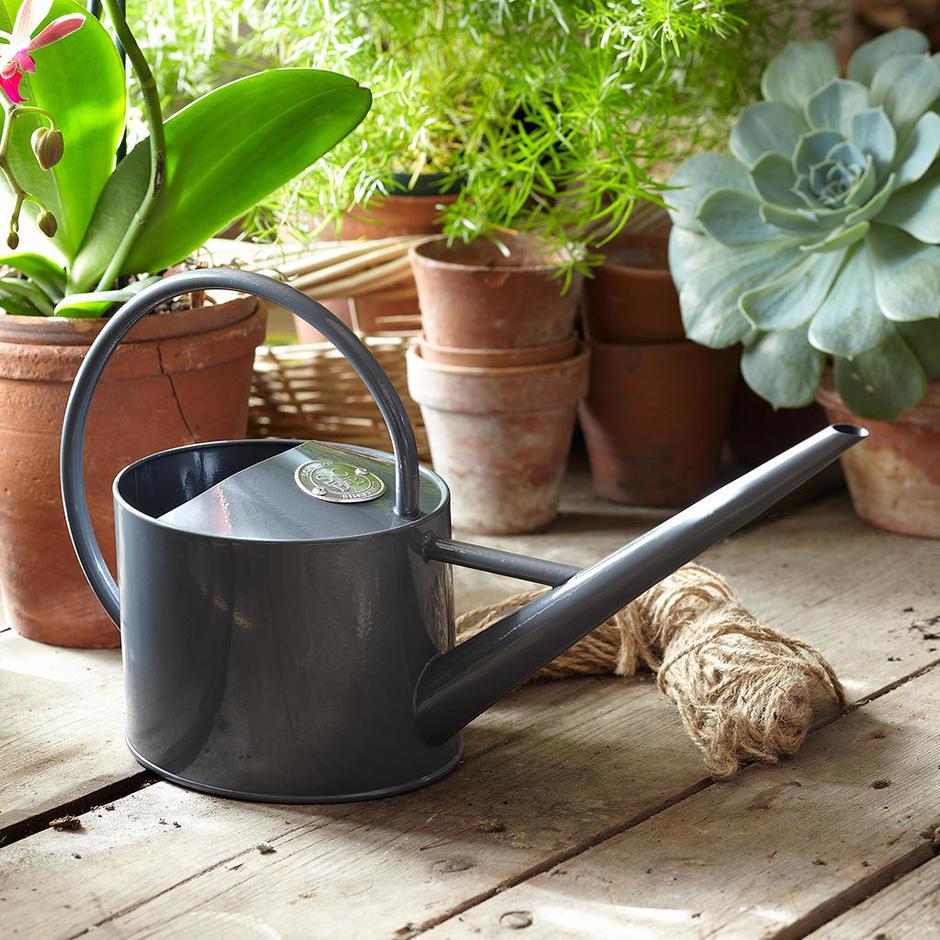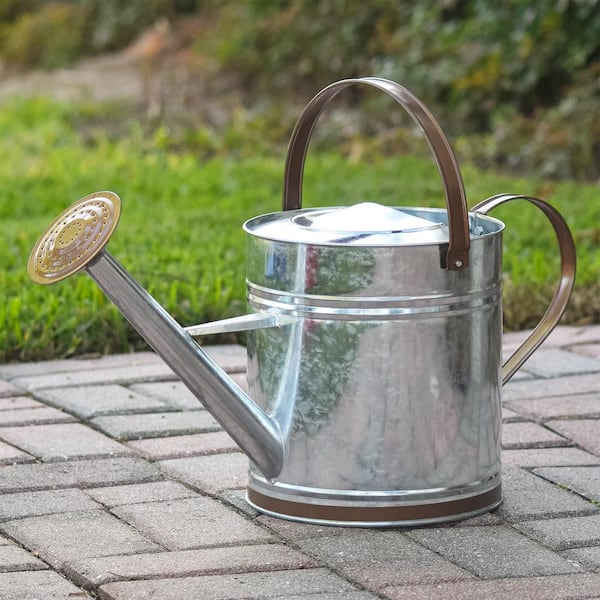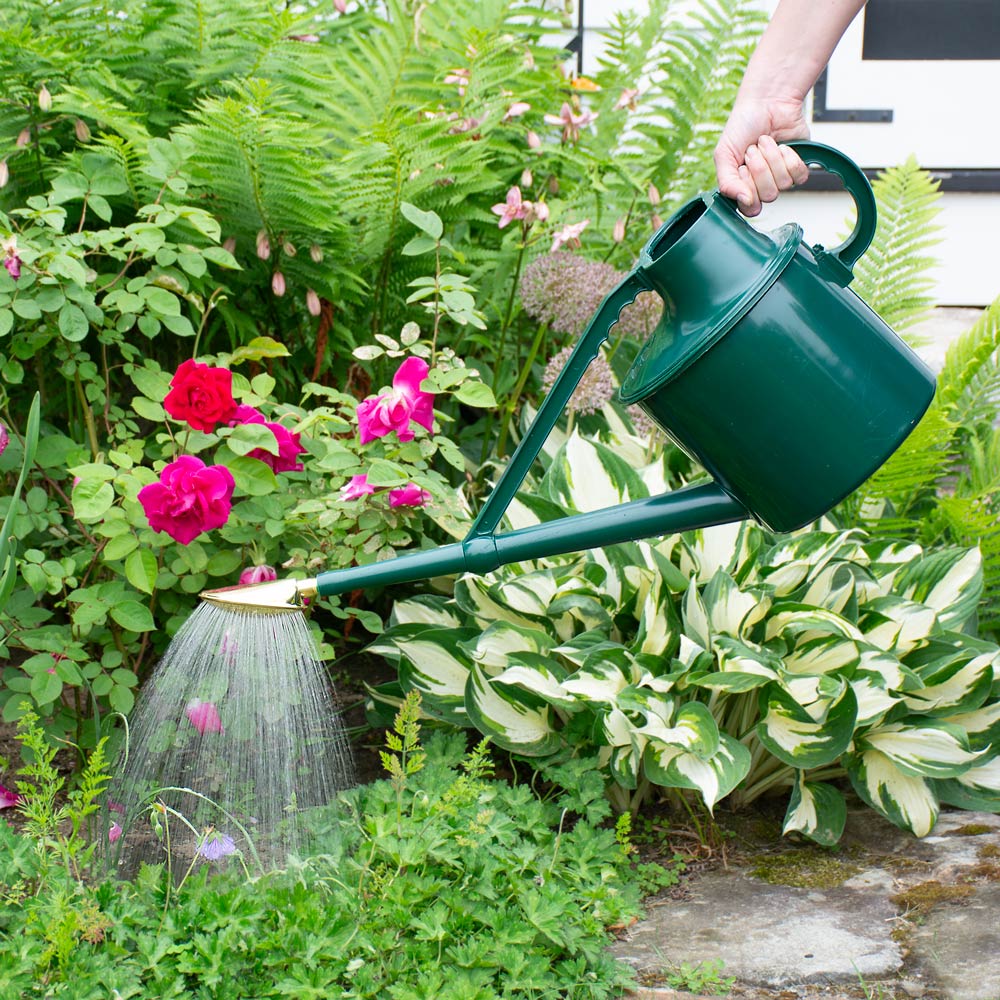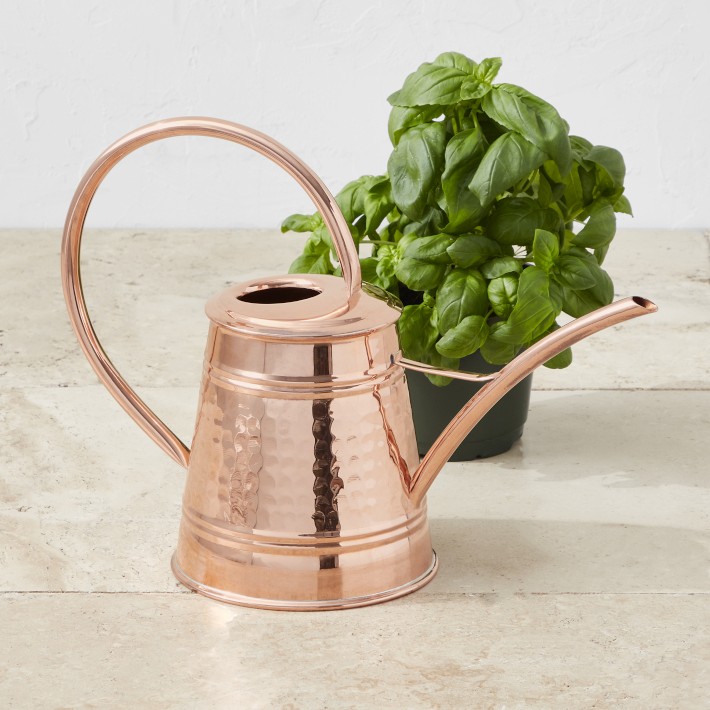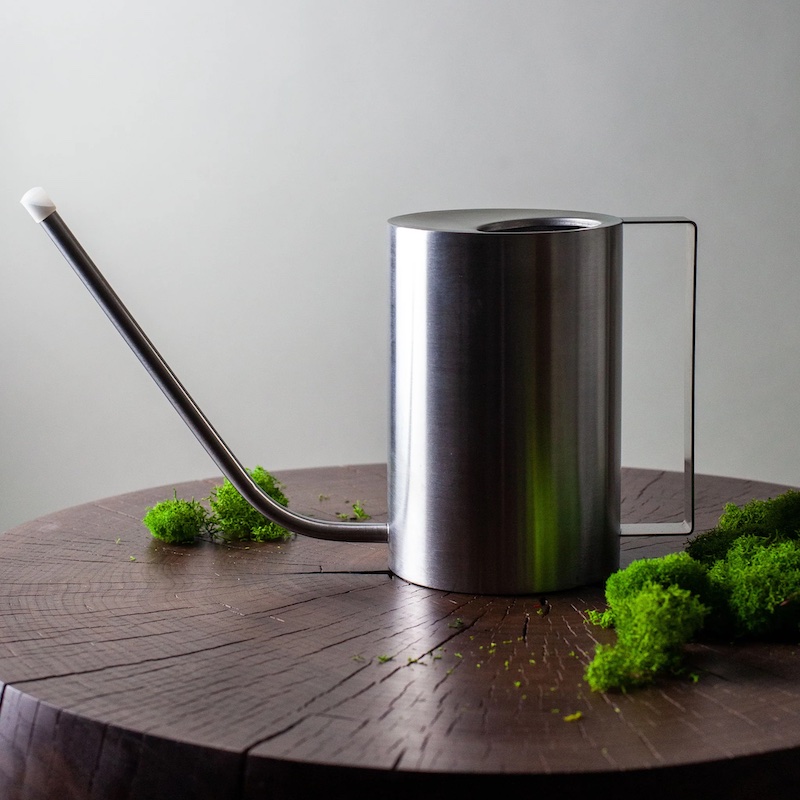
Choosing the Best Indoor Watering Can for Plant’s Health 2025
The Importance of Proper Indoor Plant Watering
Proper indoor plant watering sustains plant health. It promotes growth and prevents disease. Many indoor plants come from humid climates. They need regular, consistent moisture levels. Overwatering and underwatering can both cause harm. Roots can rot or dry out. Leaves may yellow, wilt, or drop off. Choosing the best indoor watering can helps avoid these issues. It allows for gentle, precise water delivery. This mimics natural rainfall, which plants have adapted to. A suitable can offers control over water flow and volume. This ensures that every plant gets just what it needs. Remember, the right can makes all the difference in plant care. Now, let’s explore the key features to look for in your next best indoor watering can.
Key Features to Look for in an Indoor Watering Can
When searching for the best indoor watering can, certain features make some standout. Consider these essentials:
- Capacity: Size matters. You’ll want a can that holds enough water for your indoor garden but isn’t too heavy when full.
- Material: Good cans come in different materials. Plastic is lightweight and affordable. Metal options lend durability and style. Go for one that fits your routine and decor.
- Spout Design: A spout with a gentle flow is key for precise watering. Look for a can with a narrow spout to reach between leaves without splashing.
- Balance and Handle Design: A comfortable grip and a well-balanced can ease your watering chores. It should feel good in your hand even after filling it up.
- Ease of Filling: Your watering can should fit under the sink tap easily. A wide opening helps avoid spills.
- Detachable Spout Heads: Some cans offer detachable heads. These can provide a soft shower or a steady stream, depending on your plant’s needs.
- Water Level Indicator: For those who prefer precision, some cans have level indicators. This helps you monitor how much water you’re giving to each plant.
Choosing the best indoor watering can with these features will streamline your plant care routine. It also ensures your plants thrive with just the right amount of water.
Types of Indoor Watering Cans
When hunting for the best indoor watering can, you’ll come across diverse types. Each serves different needs and preferences. Dive into these common types:
Long Spout Watering Cans
Long spout watering cans are optimal for reaching into thick foliage without disturbing plants. Their extended spouts ensure water reaches the soil, not the leaves, preventing fungal diseases. These cans are great for deep pots and hanging baskets. With a narrow and lengthy spout, you get precise control, minimizing spills.
Mini Watering Cans for Small Plants
Have a collection of succulents or small potted herbs? Mini watering cans deliver a fine amount of water for these delicate plants. They’re lightweight and easy to handle. Plus, their compact size fits snugly on a windowsill or shelf, always ready for quick touch-ups.
Decorative Watering Cans for Interior Aesthetics
Who says utility can’t be stylish? Decorative watering cans add a splash of charm to any room while fulfilling their purpose. They come in vibrant colors, elegant styles, and various materials. Some even serve as planters or vases when not in use, blending seamlessly with your decor.
Material Considerations for Durability and Style
Choosing the best indoor watering can isn’t just about function. It’s also about finding a piece that stands up to frequent use and complements your home’s interior. Here’s what to consider when it comes to materials:
Plastic Watering Cans
Plastic is a common choice for indoor watering cans. It’s lightweight, making it easier to carry around. Plastic cans resist rust and are often more affordable. However, they can vary in quality. Look for high-grade, BPA-free plastics for safety and longevity.
Metal Watering Cans
Metal cans offer durability and a classic look. They can withstand drops and rough handling. Metals like stainless steel or galvanized iron prevent rusting. Choose these if you desire a timeless style that lasts years.
Ceramic Watering Cans
Ceramic watering cans are pieces of art in themselves. They add a touch of elegance to your indoor garden. They’re heavier and more delicate than other materials but offer unique charm and sophistication.
Silicone and Other Modern Materials
Some modern watering cans incorporate silicone or rubber elements for flexibility and grip. These innovative materials may offer features like collapsibility for easy storage.
When picking the best indoor watering can for your needs, consider how often you’ll use it, the size of your indoor garden, and your personal aesthetics. Go with a material that meets your practical needs and suits your style preferences. Whether you favor practicality, durability, or design, there’s a material perfect for your watering tasks.
Top Indoor Watering Can Picks for 2025
Selecting the best indoor watering can is crucial for gardening enthusiasts. For 2025, we’ve curated a list of top picks to ensure optimal plant care. These watering cans combine functionality with style and durability, ensuring a pleasurable gardening experience.
Long Spout Watering Cans
Our 2025 selection includes long spout cans, ideal for reaching into dense plants. These cans distribute water evenly, right to the base of your plants. Their design minimizes risk of leaf fungus and spills. Their spouts provide precision, essential for plants in deep pots or hanging baskets.
Mini Watering Cans for Small Plants
For those who love smaller plants, our mini watering cans are perfect. They are light and simple to handle. Small in size, they fit easily in tight spaces, like shelves or windowsills. We’ve tested each one to ensure it offers the right amount of water for delicate plants.
Decorative Watering Cans for Interior Aesthetics
We also showcase decorative cans that double as home decor. These stylish options come in bold colors and elegant designs. They not only water plants efficiently but also enhance your room’s look. Some even act as vases, merging utility with aesthetics.
Our top picks for the best indoor watering can in 2025 cater to diverse needs and tastes. They make plant care easy and integrate well with your lifestyle. Choose one that fits your indoor gardening routine and personal style.
Ergonomic Design: Ensuring Comfort in Use
Ergonomic design is key for selecting the best indoor watering can. Comfort in use is just as important as the watering can’s functional features. When you water plants regularly, a can that’s awkward or heavy can strain your hands and wrists. An ergonomic watering can fits comfortably in your grip and maintains balance, even when full.
Here are some ergonomic features to look for:
- Lightweight Build: A can that’s easy to lift and move reduces fatigue. Lightweight materials help make this possible.
- Curved Handles: A handle with a natural curve can make holding and pouring more comfortable. This shape supports your hand’s natural position.
- Balanced Design: The best indoor watering cans should feel stable and easy to tilt. This balance helps prevent spills and reduces strain on your body.
- Non-Slip Grip: Look for a can with a handle that doesn’t slip in wet conditions. A secure grip ensures safe and precise pouring.
An ergonomic watering can improves your watering experience. It helps prevent discomfort during lengthy plant-care sessions. Remember to test the feel of a can before you purchase. Lift it, hold it, pretend to water – find one that feels like an extension of your hand.
Innovative Watering Cans: Exploring New Features and Technologies
With 2025’s gardening scene evolving, the best indoor watering can is also advancing. Manufacturers are bringing out cans with new features and technologies. These innovations aim to enhance plant care and user experience.
Here are the latest trends to look for:
- Self-Watering Cans: These cans do some of the work for you. They release water slowly over time, perfect for when you’re away.
- Digital Watering Reminders: Some watering cans now come with built-in timers or apps. They remind you when it’s time to water, ensuring your plants stay hydrated.
- Adjustable Flow Rates: Advanced cans offer settings for varied water flow. You can switch from a gentle mist to a steady stream with ease.
- Eco-Friendly Materials: Today’s best indoor watering cans are not just about style. They also respect the environment with recycled or biodegradable materials.
- Integrated Measuring Tools: Precision is key in watering. Select cans have built-in rulers or measuring reservoirs to help you give the exact amount of water.
These innovative watering cans are transforming the way gardeners care for their indoor plants. They add convenience and precision, setting the standard for the future. When choosing your next watering can, consider these modern options to make indoor gardening more efficient and enjoyable.

Efficient Watering Can: Watering Can for Indoor Plants
The Importance of Proper Watering for Indoor Plants
Under-watering and over-watering can harm indoor plants. Getting it right is vital for plant health. Here’s why proper watering matters:
- Root Health: Too much water leads to root rot, while too little can dehydrate roots.
- Nutrient Uptake: Water carries essential nutrients from soil to plant.
- Leaf Health: Leaves need water for photosynthesis and to prevent wilting.
- Disease Prevention: Proper watering can prevent diseases caused by stagnant water.
- Growth: Adequate water is crucial for growth; plants use water for cell expansion.
Watering indoor plants correctly will keep them healthy and help them thrive. Using a well-designed watering can for indoor plants makes regular and accurate watering easier. It can also be a joy rather than a chore. Balance and care in watering ensure your plants get just the right amount of moisture. This contributes to a luscious, vibrant indoor garden that you can be proud of.
Types of Watering Cans for Indoor Gardening
Choosing the right watering can for indoor plants is crucial. With various types available, picking one can seem daunting. Here are the main types to consider:
- Plastic Watering Cans: These are lightweight and affordable. They come in many sizes and colors. However, they may not be as durable as other materials.
- Metal Watering Cans: Often made from stainless steel or galvanized metal. They are sturdy and long-lasting. They tend to be heavier but can withstand frequent use.
- Ceramic Watering Cans: These add a decorative touch to your indoor garden. They are heavier and fragile but can be a beautiful accessory.
- Self-Watering Cans: Some have a design that allows for slow, steady water release. This can be great for consistent watering without overdoing it.
- Novelty Watering Cans: Designed to look like animals or other fun shapes. They can make watering plants more enjoyable. Yet, their functionality might not match traditional designs.
Choosing the right type depends on your needs, the number of plants, and personal style. For a single plant, a small, lightweight can might work well. For those with more plants or heavier watering needs, a robust metal can could be better. It’s all about matching the can to your indoor gardening routine. When selecting, keep the key factors of durability, capacity, and ease of use in mind.
Factors to Consider When Choosing a Watering Can
When picking a watering can for indoor plants, several factors are key to consider:
- Size and Capacity: Match your can to the number of plants you have. A large garden needs a bigger can.
- Material: Choose between plastic, metal, or ceramic. Think about longevity and weight.
- Design and Spout: Look for cans with a comfortable handle and a spout that can reach tight spots.
- Ease of Filling: Consider the can’s opening. It should be easy to fill without spilling water.
- Durability: Opt for a can that will last. Metal often outlives plastic or ceramic.
- Maintenance: How easy is it to clean the can? Regular cleaning prevents mold growth.
- Aesthetic: Do you want the can to match your decor? If so, color and style matter.
Remember, a well-chosen can makes watering simple, boosts your plants’ health, and saves you time. It’s worth investing in a can that suits your gardening routine and fits well with your indoor space.
Ergonomic Watering Can Designs for Comfort and Efficiency
Ergonomics play a key role in watering can design. A good watering can for indoor plants should be easy to hold, carry, and pour without causing strain. Here are features to look out for:
- Lightweight Material: Opt for cans made with light materials. They reduce arm fatigue during long watering sessions.
- Balanced Design: Ensure the can feels balanced when full. A centered gravity point aids in control.
- Curved Handle: A handle with a natural curve fits better in your hand.
- Long Spout: A spout with length allows you to water hard-to-reach plants. No more stretching or bending.
- Thumb Control: Some cans have a thumb-controlled valve. They offer better water flow control.
Ergonomic watering cans are a wise choice for gardeners. They combine functionality with comfort. Such cans help prevent wrist and back pain often seen with awkward or heavy cans. By investing in ergonomically designed watering cans, you can enjoy tending to your indoor garden. Your plant care routine becomes more efficient and less tiresome. This promotes a more enjoyable and successful gardening experience.
Innovative Features in Modern Watering Cans
Modern watering cans for indoor plants boast innovative features to enhance your gardening. Some stand out features to consider include:
- Detachable Spouts: These allow for easier cleaning and can adjust to different water flow needs.
- Built-in Measuring Scales: They help you provide the precise amount of water your plants need.
- Filters: They trap debris and keep the water clean, protecting plant roots.
- Comfort Grip Handles: These reduce hand strain and improve your control when watering.
- Water Level Indicators: Clear markings show how much water is in the can, so you refill at the right time.
- Collapsible Bodies: Some cans collapse to save space when not in use, perfect for small living areas.
- Dual-Action Spouts: Offer both a sprinkle and a steady stream. This feature caters to various plant needs.
These features make watering more efficient and less of a hassle. They show how design has come a long way, focusing on the user’s ease and the plant’s health. Choose a can with features that match your watering habits and the size of your indoor garden. You may find some features more useful than others. It’s all about finding the right blend that works for you. Go for a watering can that makes your routine easier and helps your plants flourish.
Maintaining Your Watering Can for Longevity
Maintaining your watering can for indoor plants is essential for its durability. Proper care will prevent wear and tear and keep it functional for years. Here’s how:
- Regular Cleaning: After each use, rinse the can to remove dirt or residue. This ensures no clogs form in the spout.
- Dry Storage: Store your can in a dry place to prevent rust and mold. Metal cans, especially, need dry conditions.
- Check for Damage: Look for dents, leaks, or corrosion. Address these issues early to avoid bigger problems.
- Handle with Care: Avoid dropping your can. This can prevent dents in metal cans or cracks in ceramic ones.
- Replace Parts: If your can has detachable parts, replace them when they show wear.
A little effort goes a long way in maintaining your watering can. Keep it clean, store it properly, and handle it with care. By doing so, you ensure that your investment continues to make watering your plants easy and effective.
Tips for Watering Indoor Plants Effectively
Proper watering techniques are critical for the health of indoor plants. Here are some straightforward tips to water your indoor plants effectively:
- Check Soil Moisture: Before watering, feel the soil. If the top inch is dry, your plant likely needs water.
- Use Room-Temperature Water: Cold water can shock plant roots. Always use water at room temperature.
- Water Evenly: Distribute water around the whole pot to reach all the roots.
- Morning Watering: The best time to water is in the morning, giving plants time to absorb it before nightfall.
- Avoid Wet Leaves: Wet leaves can lead to fungal diseases. Aim your watering can for indoor plants at the soil, not the foliage.
- Drainage Is Key: Ensure your pots have drainage holes to avoid water pooling at the bottom.
- Adapt to Seasons: Plants often need less water in winter. Adjust your watering habits with the seasons.
- Monitor Plant Health: Keep an eye on your plant’s leaves and growth. They indicate if the watering schedule works.
By following these tips and using a well-designed watering can for indoor plants, you’ll maintain vital, beautiful greenery in your living space. Remember, each plant is unique, so they may have different watering needs. Regularly observe and adjust your watering technique to suit each plant’s requirements. Happy gardening!
Where to Buy the Best Watering Cans for Indoor Plants
Finding the right watering can for indoor plants can enhance your gardening experience. There are plenty of places to buy watering cans, each offering different styles and features. Here’s a guide to help you find the best watering can for your needs.
- Local Garden Centers: Visit nearby garden shops. They often have a selection of watering cans. Staff can offer advice based on your needs.
- Home Improvement Stores: Stores like Home Depot or Lowe’s carry gardening tools. Look for watering cans in their gardening section.
- Online Retailers: Websites like Amazon or eBay offer a vast range. Read reviews to gauge quality and suitability.
- Specialty Gardening Stores: These stores focus on gardening supplies. They may have unique or high-end cans.
- Direct from Manufacturers: Buying from the brand’s website can ensure authenticity. They might offer warranties or replacement parts.
Before purchasing, remember to check for ergonomic design and innovative features. Reviews and product descriptions can provide useful insights. Match the can to the number of plants you have and consider how it will fit into your space. With the right care, a quality watering can will be a long-term investment in your indoor garden’s health and beauty.
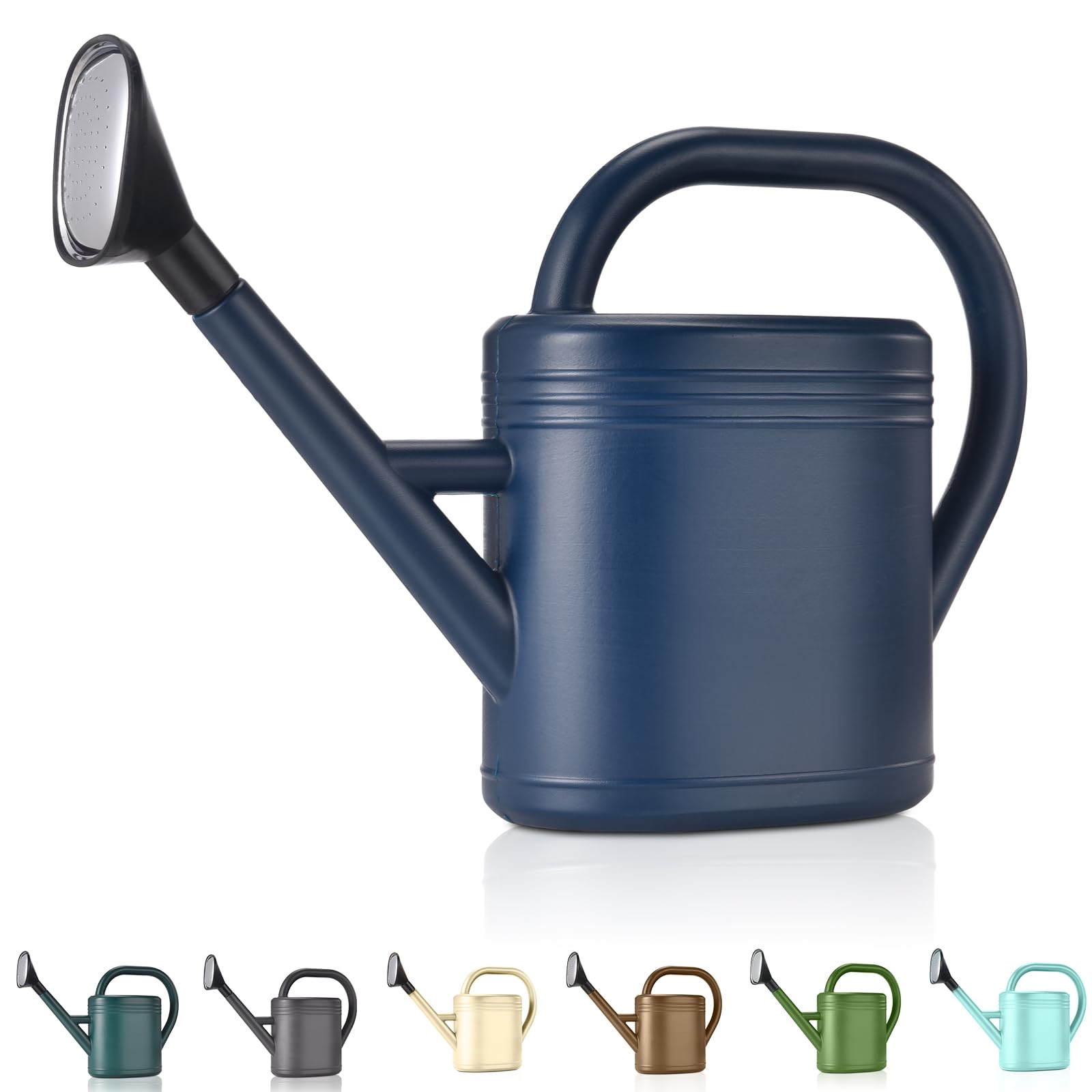
Mastering Plant Hydration with the Watering Can
The Importance of Proper Plant Hydration
Proper plant hydration is critical for their survival and growth. Just as humans need water to thrive, plants require adequate moisture to maintain their physiological processes. Without enough water, plants can suffer from stress, leading to wilting, stunted growth, and even death. The role of a watering can in this process is not just to supply water but to do so in a way that matches the plant’s needs.
The soil around a plant acts like a reservoir, storing water for the roots to absorb. A can with a gentle pour helps to mimic natural rainfall, encouraging the roots to grow deeper and stronger. Over-watering can be just as harmful as under-watering. It can cause root rot, a dangerous condition that suffocates the roots and prevents them from absorbing nutrients. Using the right can helps gardeners avoid this by controlling the amount and rate of water applied.
Additionally, proper hydration supports photosynthesis, the process by which plants convert light into energy. With insufficient water, photosynthesis slows down, affecting the plant’s ability to produce energy for growth. Different plants have diverse water requirements, making the choice of cans even more pertinent.
Consistent moisture levels help to prevent plant diseases and pests. Overly dry conditions can attract pests like spider mites, while overly moist environments can foster fungal infections. A careful balance, maintained by the regular and attentive use of a can, will help create a healthy environment for plants to flourish in.
In summary, the importance of proper plant hydration cannot be overstated. It is a fundamental aspect of gardening that ensures plants remain healthy, resilient, and beautiful. The can, as a tool, plays a pivotal role in achieving this hydration balance, making it an indispensable item for both novice and expert gardeners alike.
Choosing the Right Watering Can for Your Plants
Choosing the right watering can is key to plant health. Different plants need different watering methods. The can must fit the needs of your plants, soil, and climate. Consider the can size and spout type. A long spout distributes water evenly. It avoids water waste and leaf wetness that can cause disease. Factor in the can’s weight when full. Heavy cans are hard to carry and can strain your arms. Look at the can’s handle too. Make sure it is comfortable to grip and hold.
For seedlings, a small can with a gentle sprinkle is best. It waters them without washing away soil or seeds. For large plants or outdoor gardens, go for a larger can. It should have a rose or breaker attachment. This attachment controls water flow and simulates gentle rain. Potted plants do well with a medium-sized can. It allows precise watering without spillover.
Always match the watering can to your garden’s size and type. It makes the task of watering efficient and effective. It also saves time and protects your plants from harm. The best can will help your plants thrive and grow vibrant and strong.
Types of Watering Cans and Their Uses
There are various types of watering cans. Each type meets different gardening requirements. A common metal can is durable and suitable for outdoor gardens. Plastic cans are lightweight and often cheaper. These work well for indoor plants and patios. Cans with removable roses are versatile. They are perfect for gentle watering of seedlings and established plants alike.
For small indoor plants, a narrow spout can is best. It delivers a precise stream to avoid overwatering. Large rubber or plastic cans suit big outdoor areas. Their capacity reduces the need to refill often. For hanging plants, opt for a can with a long and angled spout. This design makes reaching difficult spots easier.
Balcony gardeners tend to prefer small, stylish cans. They often come in unique designs that complement home decor. High-end stainless steel cans resist rust and last longer. They are a choice for the serious gardener. Collapsible cans save space and are good for occasional use.
The choice of a watering can should depend on the garden’s specific needs. Consider the can’s material, capacity, and spout design when making your choice. The right can makes watering efficient and helps keep plants healthy. With the correct use of these cans, your garden will display its vibrant best.
Best Practices for Watering Your Plants
Watering your plants correctly is as crucial as choosing the right watering can. Here are some best practices to keep your plants perfectly hydrated:
- Water in the morning or evening. This prevents quick evaporation and gives plants time to absorb moisture.
- Check the soil before watering. If the top inch is dry, it’s time to water.
- Use lukewarm water. Cold water can shock plant roots, especially in colder climates.
- Water slowly and deeply. This encourages roots to grow downward, seeking moisture.
- Avoid wetting the foliage. Wet leaves can lead to fungal diseases and pests.
- Adapt to weather and seasons. Plants need less water in cool, rainy periods and more in hot, dry spells.
- Be mindful of each plant’s needs. Some prefer dry conditions, while others thrive with more moisture.
Following these simple steps ensures that your plants get the right amount of water without harm. You’ll promote healthy growth and avoid common problems like over or under-watering.
Watering Can Features to Consider
When choosing a watering can, certain features can make a big difference. Here are some to keep in mind:
- Material. Metal or plastic? Consider durability and weight.
- Capacity. How much water do you need? Pick a size easy to carry when full.
- Design. Look for handles and spouts that make watering comfortable.
- Spout Length and Shape. Long spouts reach under leaves; angled spouts help with high places.
- Nozzle Type. Removable roses offer a gentle shower for delicate plants.
- Comfort and Balance. A well-designed can feels good to hold, even after long use.
These features help ensure you water with ease and precision. They protect your plants from stress or damage. Keep them in mind to find a can that suits both your garden and your comfort.
Maintaining Your Watering Can for Longevity
Taking care of your watering can is crucial for its longevity. Like any gardening tool, regular maintenance helps keep it in good condition and makes watering more effective. Here are key steps to help prolong the life of your can:
- Rinse thoroughly after each use. Residual water can leave mineral deposits that may corrode metal cans.
- Store it upside down. This allows all the water to drain out, preventing rust or mildew buildup.
- Keep it clean. Wipe it down to remove dirt and debris that can cause scratches or rust on metal cans.
- Inspect for leaks. Small holes can be patched, but larger damage may mean it’s time for a new can.
- Avoid dropping your can. This can dent or crack it, affecting its balance and ability to pour smoothly.
By following these simple tips, you ensure that your watering can remains functional for many watering seasons. Your plants will continue to benefit from the care you put into maintaining this essential gardening tool.
Watering Can Innovations and Eco-Friendly Options
The world of gardening is evolving with innovative watering cans. Gardeners now have options that are not only functional but also kind to the environment. Eco-friendly watering cans support sustainable gardening practices. Here are some exciting innovations in watering cans:
- Recycled Materials: Many watering cans now come made from recycled plastics or metals.
- Collapsible Designs: Save space and use less material with a collapsible watering can.
- Solar-Powered: Some cans feature small solar panels to power sensors for precise watering.
- Self-Watering: Newer cans can release water slowly over time. They mimic natural processes.
- Water Measuring: Advanced cans have measuring marks to prevent over-watering.
Eco-friendly options focus on reducing waste and conserving water. Gardeners can choose cans that use minimal resources. A simple choice like a watering can has a big impact. It affects both plant health and our environment.
Some tips for eco-friendly watering include:
- Harvesting Rainwater: Use rain barrels to collect water for your garden.
- Mulching: Mulch retains moisture in the soil, reducing the need to water often.
- Right Timing: Water early or late to avoid evaporation and save water.
By choosing innovative and eco-friendly watering cans, gardeners take a step towards a more sustainable world. They help preserve resources while keeping gardens thriving. With the right can, you water wisely and care for the earth too.
Tips for Efficient Watering Techniques
Efficient watering techniques save time and support plant health. Here are tips to water your plants well:
- Create a schedule. Track when you water each plant to avoid both over and under-watering.
- Measure water use. A can with measurement marks helps give just the right amount of water.
- Soil type matters. Sandy soils drain fast and need more water; clay holds moisture longer.
- Group similar plants. Place those with the same watering needs together to simplify your routine.
- Use a timer. Automate watering with a timer to avoid the risk of forgetting.
- Invest in quality tools. A durable can with the right features is worth the cost.
- Check weather forecasts. Adjust watering based on upcoming rain or dry spells.
Maximize every drop by following these methods. Your plants will thrive with just the right touch of water.
